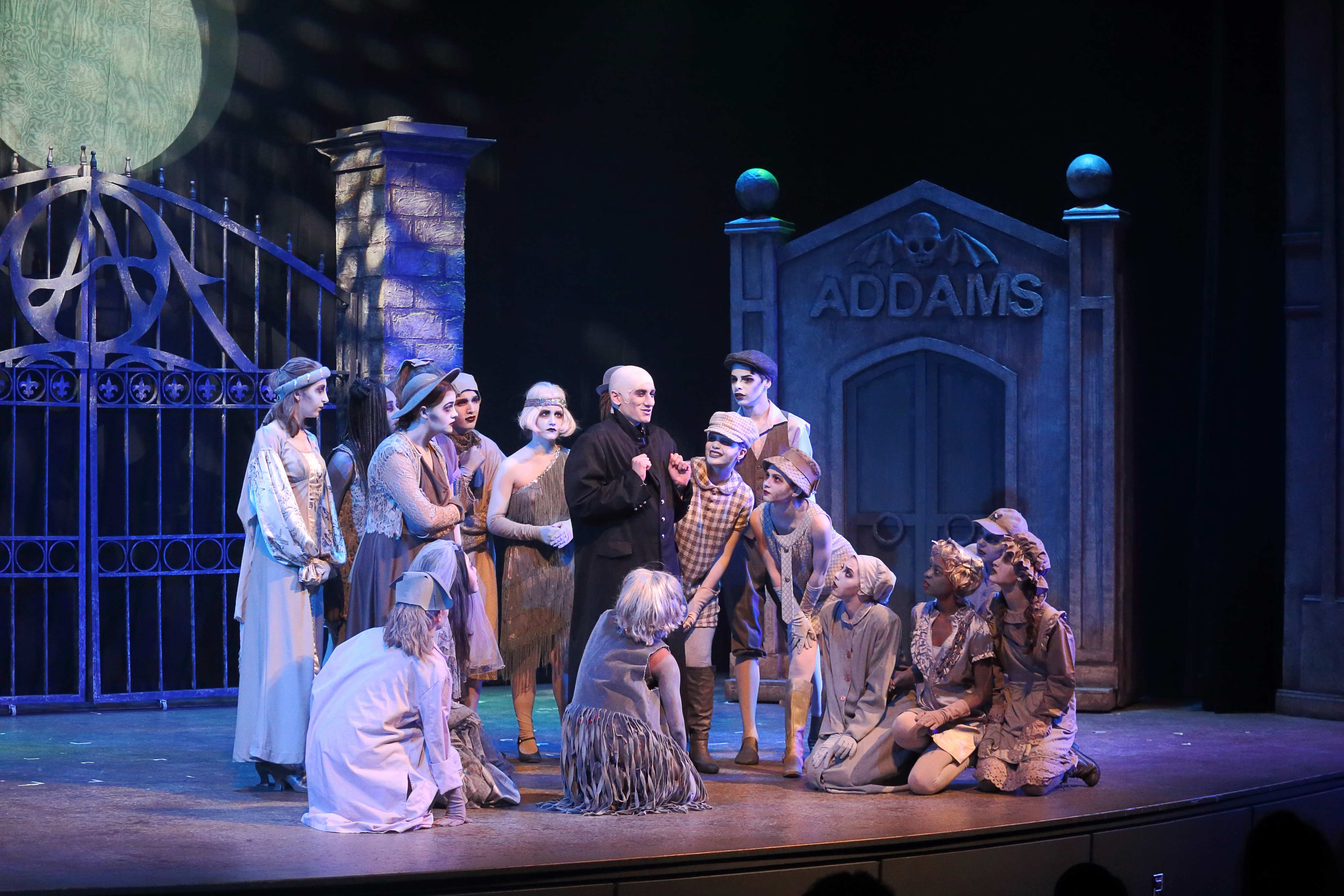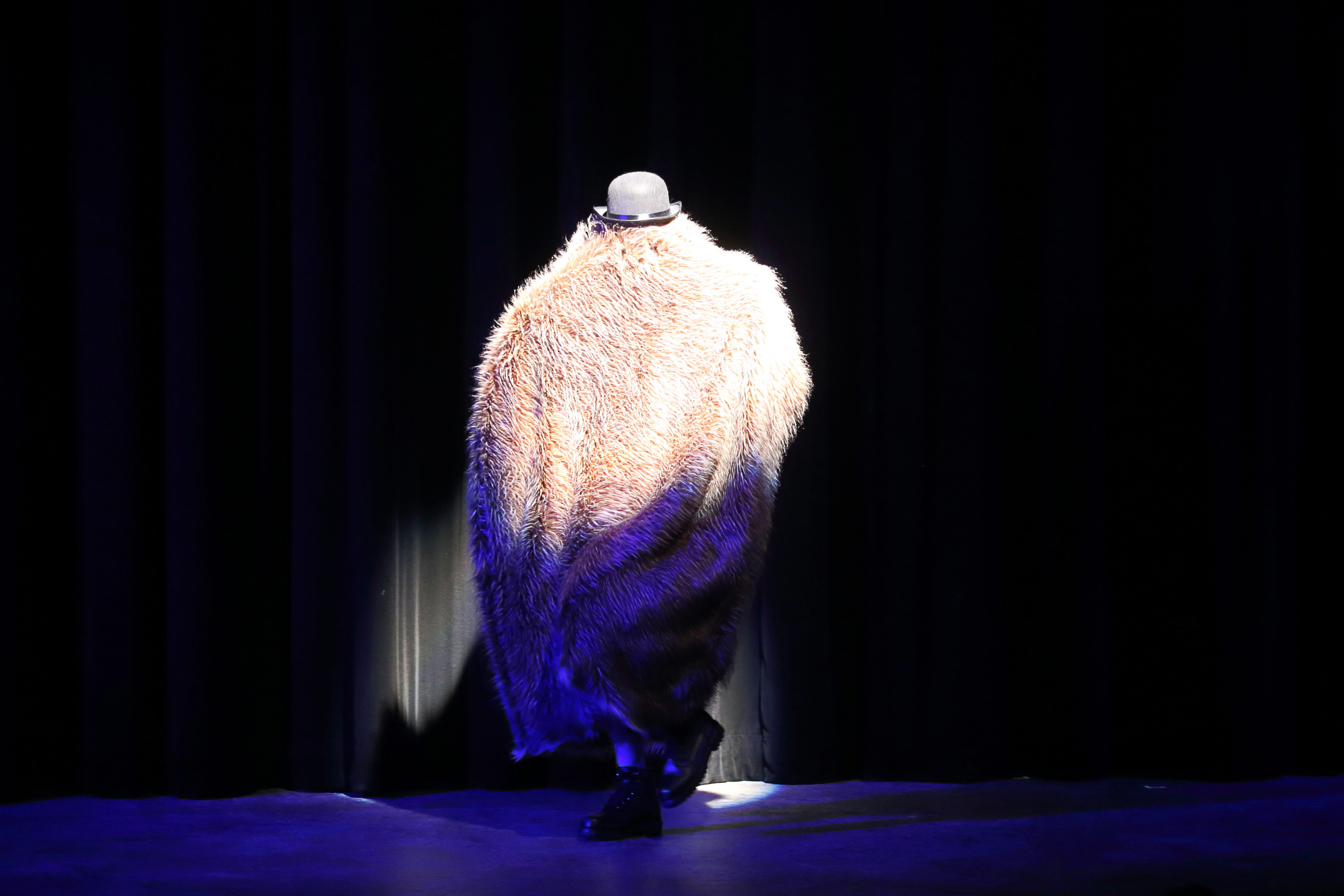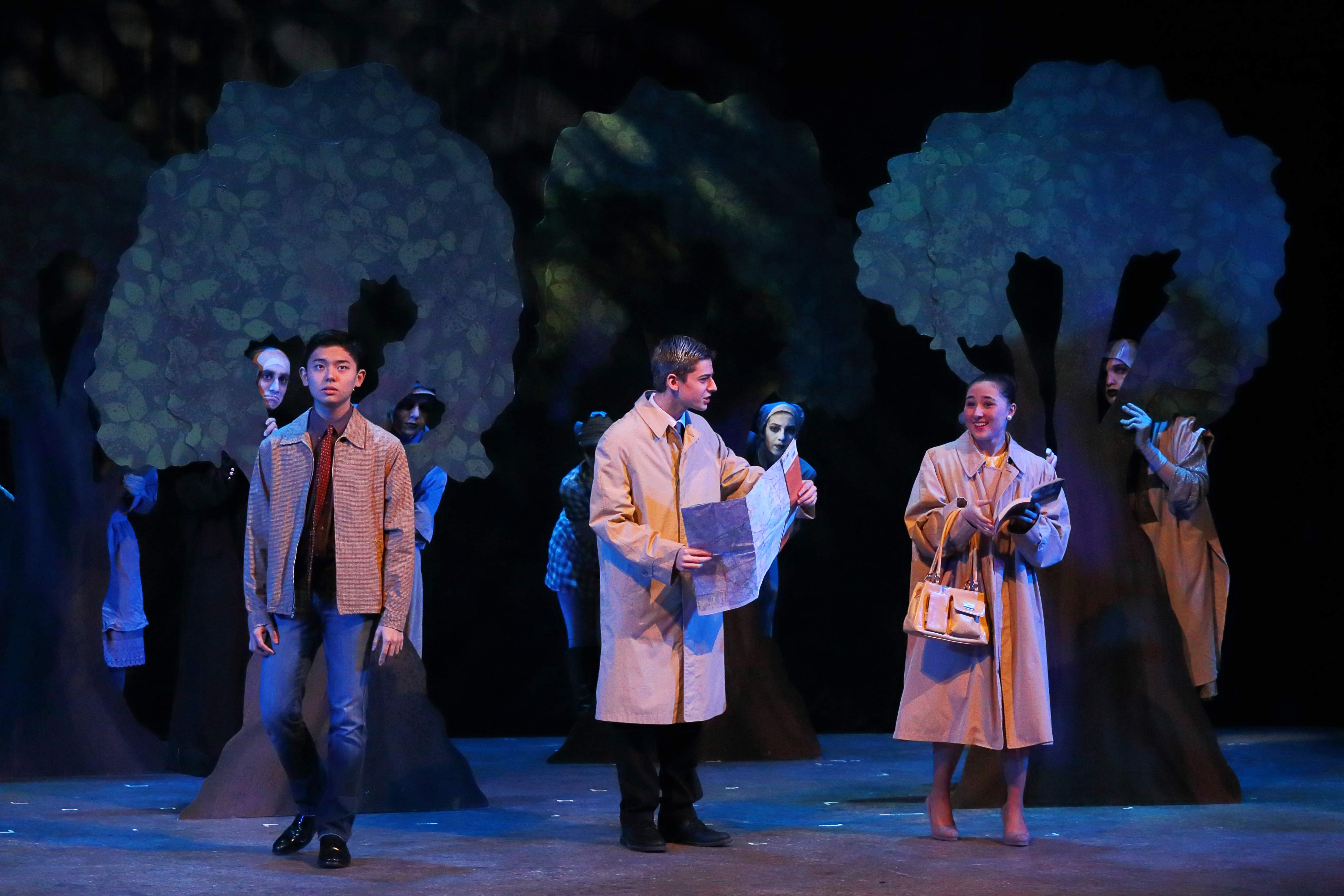
Mar 25, 2018 | Opinion
By Felicia Ho (V)
“At 17 years old, he’s won it — the first gold medal for the United States at the 2018 Winter Olympics.” “She’s a golden girl! What a force to be reckoned with!” As the Winter Olympic Games opened in Pyeongchang, South Korea on February 9, two breakout snowboarding stars, Red Gerard and Chloe Kim, shone on the glittering half pipe. Immediately they became Internet sensations and lit up headlines on newspapers around the world; they had made their mark, one for the ages, in this year’s Olympics. Although these two young rising stars are beaming signs of hope in the 2022 Olympics, it is important to remember that the Olympics also celebrates stories of veterans.
There are several five-time Olympians competing in the Games this year, including Aliona Savchenko, a German pairs figure skater, and Kelly Clark, an American snowboarder. Lindsey Vonn, an American skier, is competing in her fourth Olympics, and Mirai Nagasu, an American figure skater, is in her second Olympics. These veterans all have their own outstanding stories of getting back up when they’ve been wiped out, of taking up the courage to compete again after failing to qualify for the Olympics in previous years. After all their sweat and tears, they’ve pushed through to make it to the podium. And even if they don’t win, they continue to work even harder than before, inspiring athletes like Red and Chloe.
“Today I wrote history… This is what counts,” Savchenko said after she finished her record-breaking gold medal free skate pairs program with her skating partner, Bruno Massot. Savchenko had been a Bronze medalist in both the Vancouver 2010 and Sochi 2014 Winter Olympics, but never before had she clinched a cold, hard, golden medal in her hands. Although her age posed a challenge in continuing a physically demanding career, she fought on, and the results have paid off, as she is now the oldest woman to win an Olympic gold medal in figure skating.
Similarly, Kelly Clark at 34 years old defies her age in snowboarding. Although her last Olympic gold medal in half pipe snowboarding was over a decade ago, at the 2002 Salt Lake City Winter Olympics, Clark continued to fight for gold at this year’s Olympics. Although unsuccessful in her attempts and capturing 4th place instead, Clark has not regretted a single moment of the work she has put herself through. Instead, she looks to inspire the next generation, explaining, “Your dreams are too small if they only include you.” Kim acknowledged Clark’s mission by presenting Clark with the Order of Ikkos Medal because “she just took me under her wing,” in reference to meeting Clark when Kim was only eight years old.
This close relationship between Clark and Kim embodies the true meaning of the Olympics: to inspire and encourage the future to challenge their limits, break records, and above all, create a lasting impact that will change history forever. Whether it be figure skating, performing in a show, or even finishing an exam with the flourish of a pen, we are built to follow our dreams, no matter how big or small they are. Once we achieve those dreams, we become an example to the people around us who cheer us on every day.
As the Olympic athletes representing Team USA are in Pyeongchang to be the #BestOfUs, we students are in Basking Ridge and Short Hills to be the #BestOfPingry. Although the competition is strong and can be overwhelming at times, we must learn to overcome that feeling and “skate” to our own songs. Our own coaches—our parents, counselors, and teachers—are watching in the bleachers, advising us every step of the way even as we fall. At times we shine in the spotlight alone, and at other times we share the spotlight, hand in hand.
For each day that we walk through those double doors, we step onto the ice a little more confidently as we are ready to amaze this big wide world.

Mar 25, 2018 | Opinion
By Ketaki Tavan (V)
The first time I was ever exposed to the concept of affinity groups was during my freshman year at Pingry. These groups were presented as “safe spaces for students to learn more about their various identities and to discuss their questions, comments, and concerns with other students who share that same identity.” My initial reaction was confusion–I couldn’t wrap my head around why we’d want to create spaces that physically separated students of different identities when the ultimate goal of our community should be inclusion and acceptance.
After this initial introduction, I hadn’t thoroughly revisited the concept of affinity groups until this year, when I was presented with the opportunity to lead the South Asian Affinity Group. With this opportunity came the task of thoughtfully considering the purposes and goals of affinity groups. Through affinity group leader training, I became more familiar with these objectives.
It became clear to me that affinity groups are a space to process and explore your identity with people who share it. I find this especially valuable as a minority in a community, country, and time. Even though I don’t necessarily feel marginalized or targeted on a regular basis, I also don’t feel like my environment is conducive to a complete freedom to embrace and grapple with my South Asian heritage.
Although I’ve found the South Asian Affinity Group to be an invaluable space where I can connect with those who can relate to the challenges I face and questions I have regarding my identity, I do understand those who believe that these spaces are divisive.
In discussing the potentially divisive nature of affinity groups, I think it’s important for people to first and foremost recognize that these groups aren’t meant to end where they start. Rather than creating identifier-specific groups that are separate but equal, affinity groups should and do serve as stimuli for conversations within cultural groups as to how each of us can effectively support productive cross-cultural dialogues as well as consider how we fit into the bigger and more diverse communities of our school and the outside world. However, this purpose is a fragile one that may not always be fully achieved.
It’s easy for affinity groups to become the only spaces where honest, identifier-related discussions are held as members return to the larger community and forget about them. This results in limited change; affinity groups are a space for our smaller groups to make progress, but Pingry lacks a structure that allows for inter-group work between each of their attendees to take place.
Ideally, this structure would be the everyday interactions of our community in its natural state, and oftentimes I find that it is. I’ve had plenty of productive and thought-provoking conversations with students with cultural identifiers different to mine that were inspired by conversations we had in our respective affinity groups. But I do think it’s potentially naïve to assume it unnecessary to have a bigger processing space where the progress made in smaller affinity groups can clearly be seen.
I also think that this lack of an inter-affinity group structure contributes to people’s fears that affinity groups are divisive. The anxiety and suspicion that can arise from a lack of insight into the work done in other affinity groups has nothing to calm it, resulting in decreased buy-in toward them in our community. Not everyone trusts that the larger processing space necessary as a follow-up to affinity groups will take form naturally in the outside world. Therefore, it would be beneficial for both those who doubt affinity groups’ effectiveness and for the realization of the ultimate goal of affinity groups to create this space at Pingry. There are many forms that this space could take; the two open forums we had this year where all students could attend were great examples.
I do believe that affinity groups are a step in the right direction on the path to equality and inclusion. I’ve found my participation in them to be an important part of my connection to my South Asian identity. That being said, I do believe there’s more to be done before affinity groups can fully accomplish their ultimate goal.
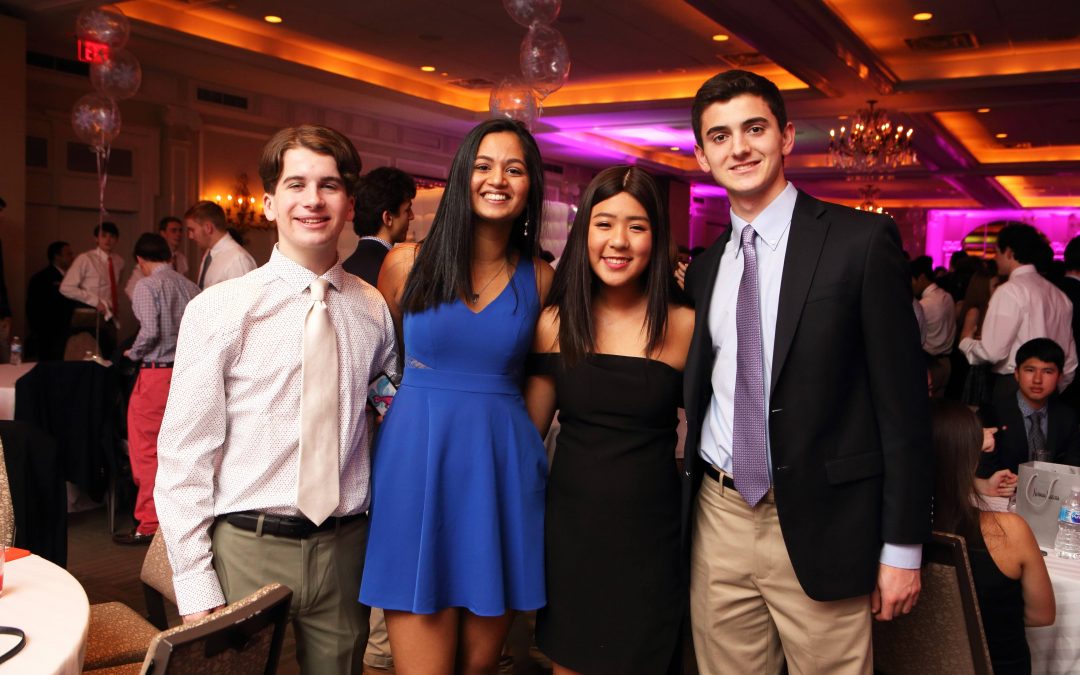
Mar 25, 2018 | School News
By Darlene Fung ’19
On Saturday, January 27, Upper School students enjoyed a night filled with friends, fun, and food at Snowball, the annual winter dance. Starting at seven o’clock, students filed in through the glass doors clad in an array of formal outfits, from party dresses to jumpsuits to bowties to button-downs.
Due to the Dolce Hotel in Basking Ridge being sold to new ownership, Ms. Kent, Ms. Weinberger, and Dean Ross decided on the Westin Governor Morris in Morristown as the new venue for Snowball.
Initially, students were unsure about the change in venue. “I had never been to the Westin before, so I didn’t really know what to expect,” Hannah Gruber (V) said. “I liked Snowball at Dolce, so I was hoping that the new place would be just as good.”
Luckily, most students agreed that the venue was a great place to host Snowball. The Westin features a large marble lobby, where students were able to check their coats before heading upstairs to the main floor. “I really liked how we could check our coats on the first floor, and the actual dance was all happening on the second floor,” said Aanya Lall (V).
Chase Barnes (V) added, “There was plenty of parking, and the place itself was beautiful.”
Tables set up all around the dance floor provided ample seating. A large variety of food was served, including pasta dishes, Asian dumplings, mini sliders, and plenty of fruit and desserts. Soft drinks and Starbucks coffee were also available throughout the night.
Commenting on the cuisine, Lall said, “The food was great, and I especially liked the layout of it. Everything was organized so that it was easily accessible to all. However, I do wish there was ice cream like they served at Dolce.”
Students also enjoyed the music. Some of the songs played included pop songs like Bruno Mars’s “Finesse” and throwbacks like Dexys Midnight Runners’ “Come on Eileen.” Songs produced by Pingry students were also featured on the dance floor, including “Phoenix” by Melissa Tungare (VI) and “Maybe I’m Crazy” by Brandon Rosen (VI).
Barnes said, “The music selection was really good this year. All the songs were ones we knew and could sing and dance along to, and I love how they played songs that our peers wrote and sang. It made Snowball extra special!”
Overall, Snowball was a night enjoyed by all. Student Body President Michael Weber (VI) said, “The Westin exceeded all expectations. Everything from the food to the decor was fantastic, and the student body really had a great time.”
Student government faculty advisor Ms. Colleen Kent added, “The feedback we’ve received from students has been overwhelmingly positive. We’ve decided to book it again for next year.”
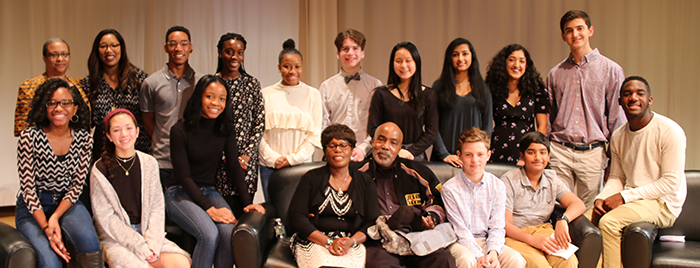
Mar 25, 2018 | School News
By Annaya Baynes ’19 and Udochi Emeghara ’19
On January 12, 2018, Sarah Collins Rudolph and her husband, George Rudolph, came to the Basking Ridge Campus for the annual Martin Luther King Jr. Day Assembly. Mrs. Rudolph is the only survivor of the 16th Street Baptist Church bombing of 1963. On Sunday, September 15, 1963, Klu Klux Klan members placed a bomb outside of a window at the 16th Street Baptist Church and it exploded, killing four young African-American girls: Addie Mae Collins, Cynthia Wesley, Carole Robertson, and Carole Denise McNair. Mrs. Rudolph is the younger sister of Addie Mae Collins; at the time, she was only twelve years old. She suffered a series of burns and was blinded in one eye after the bombing.
During the assembly, Mrs. Rudolph answered a series of questions about subjects ranging from her life immediately after the bombing to how her religion has shaped her. She detailed the events of that day, from her parents rushing her and her sisters, to her and her sister’s reluctance to go to Sunday School, and finally their decision to go to the bathroom to freshen up. As the four girls were getting ready, the bomb went off, shooting debris into the room. The noise was so loud that her future husband, who was across town in another church, could hear the explosion clearly. Mrs. Rudolph immediately started calling for her older sister, Addie Mae, but she did not receive a response. A deacon, Samuel Rutledge, saved her, and she was rushed to the hospital. It was there that she learned of the death of all the girls who had been with her. After the bombing, the perpetrators bragged about their actions and how many children they had killed, while Sarah Collins Rudolph had to go back to school with an eye missing and the death of her sister haunting her. She described her frail emotional state at the time and the incessant panic attacks that plagued her.
As she grew up, she eventually reconnected with her religion; she detailed the role God has had in her life following this traumatic event. She and her husband spoke about the need for forgiveness in this day and age. Mrs. Rudolph spoke about her personal journey to forgiving the bombers despite their indifference and even pride in their actions. She refused to continue being bitter or to allow the event to have a negative impact on her life. Eventually, she married her high school sweetheart, who helped her after the bombing. When asked if she had ever considered leaving Birmingham, she said that she had never thought of leaving.
All in all, Mrs. Rudolph and her husband sent out a loud, clear message to the student body: Forgiveness is key. Her story of loss, faith, and kindness personified the legacy of love in the face of hatred that Dr. Martin Luther King left behind.
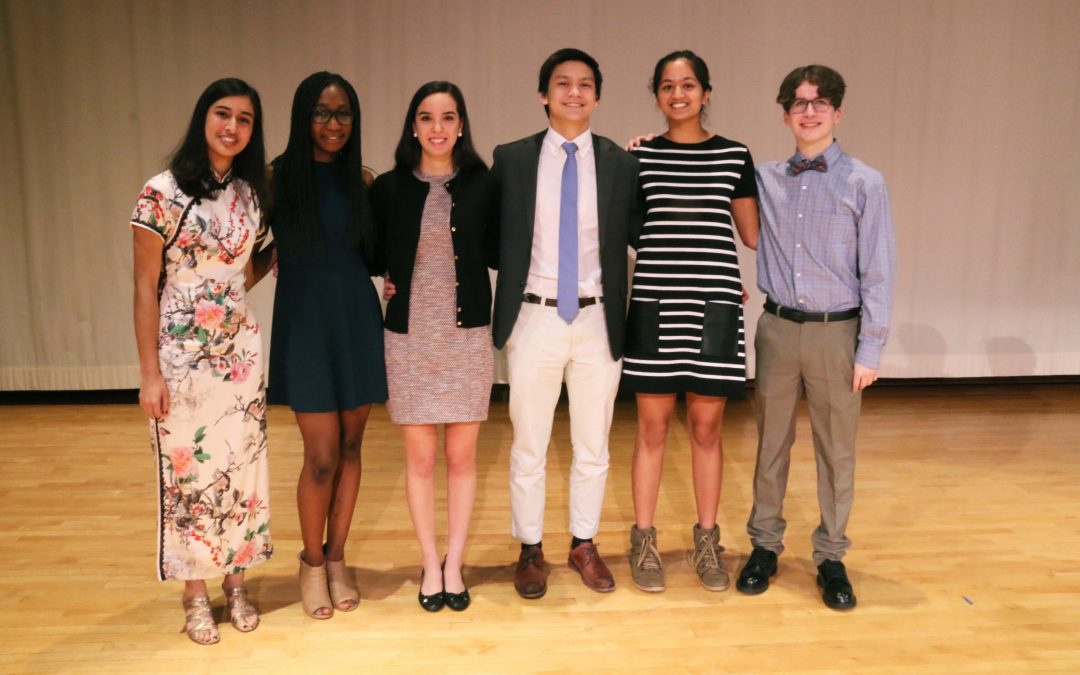
Mar 25, 2018 | School News
By Noah Bergam ’21
On Friday, February 23rd, Upper and Middle School students joined together in Hauser Auditorium for the 2018 Robert H. LeBow ‘58 Oratorical Competition. The competition, held annually and open to juniors and sophomores, was founded in 2005 by William Hetfield ‘58 and the Class of ‘58 in memory of Dr. Robert H. LeBow. Dr. LeBow, a renowned public speaker, traveled through developing countries with his wife, providing medical services to underprivileged communities.
Organized by Spanish and French teacher Mr. Richard Karrat, the assembly featured four-and-a-half- to six-and-a-half-minute-long speeches from six juniors who had qualified in the initial round.
The contest opened with a speech entitled “The Pingry Story” by last year’s runner-up Avery Didden (V). Didden celebrated the Pingry community for its members’ unique passion for learning. She illustrated this point with the trivia game show HQ, noting that, while people she knew from other schools slowly forgot about the game, Pingry students continue to play. Pingry students understand, she explained, that the game is about more than just its prize money, and they embrace the spirit of trivia and learning the game promotes.
The next speech was “Thank You” by Jonathan Chen (V). Chen began the speech by reminiscing about the childhood days when his father and mother cheered him on at soccer games and swim meets. He then transitioned into the memory of his parents’ divorce and the devastation of seeing his parents split, as he regarded them as the “best team.” Despite the feelings that came with the divorce, Chen recognized the “endless love and support” his parents continue to provide him; his final message was to “thank your parents” for all the hard work that they do.
Rashida Mohammed’s (V) “A Trust Fall” followed. Mohammed opened the speech with an anecdote about a friend confessing to her about having an anxiety disorder. Later on, Mohammed confessed, “That friend I mentioned—that was me.” She offered inspiring words as she spoke about living with the disorder. Near her conclusion, she recognized that “having any form of anxiety is on a spectrum” and highlighted the importance of representation.
Then, in traditional Chinese dress, Alisa Chokshi (V) opened her speech, “Let Your Spark Ignite,” by singing “Chengdu” by Zhao Lei. Chokshi shared her life-changing experience as a member of a Chinese language immersion program, through which she resided for six weeks last summer in the city of Chengdu. As an American, Chokshi spoke about recognizing her inner ethnocentrism, the “viewing [of other cultures] with the bias of one’s own culture,” and how her perspective changed while living in China.
The penultimate speech was “Breaking Brand: Looking Past Brands for the Better” by Miroslav Bergam (V). Bergam opened the speech with a story about how his family overlooked a cookout in South Carolina summer after summer due to its lack of branding. Bergam deconstructed the illusion of branding all around our lives and community, from cereal to computers to clubs at Pingry. He went on to highlight the “dark side” of branding: the exclusion and subsequent elitism between those who are “in on the brand” and those who are not. His final message was to be wary of the impact brands have on our lives and personalities.
The final speech was “How Media Makes Us Smarter” by Ketaki Tavan (V). Tavan questioned the ways that television, movies, and other forms of visual media are seen by our culture. She challenged the assumptions that “TV rots your brain” and “hampers creativity” by arguing that one can “consume visual media” with as much critical analysis as one can with literature. Tavan continued by analyzing Mudbound, a 2017 movie involving race relations on a farm in the Mississippi Delta, and Shameless, an ongoing television comedy about a dysfunctional family living in South Side, Chicago.
As the assembly drew to a close, Mr. Karrat named Mohammed the runner-up of this year’s competition and then announced Bergam as the winner. Everyone in Hauser walked away enriched and though-provoked by the six fantastic speeches they had heard.
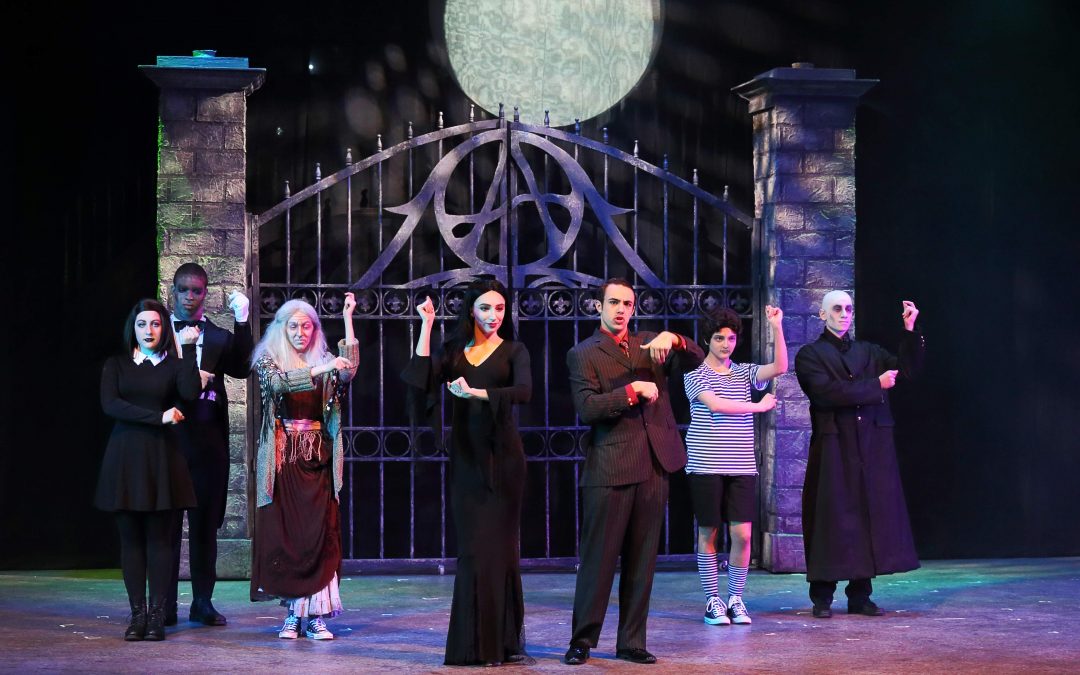
Mar 25, 2018 | Arts, School News
By Meghan Durkin ’21
On February 22, 23, and 24, Pingry’s Drama and Music Departments presented this year’s winter musical, The Addams Family, a quirky comedy written by Andrew Lippa. Following the members of the infamous clan known for their dark and twisted outlook on life, the musical takes place over one wacky night filled with exposed secrets and new revelations.
The plot focuses on what happens when Wednesday Addams (Dorothea Miller, V), the oldest child and only daughter of Gomez (Lucas Vazquez, V) and Morticia Addams (Isabel DeVito, V), finds love with a normal Ohioan named Lucas. When Lucas (Leo Zhu, V) and his parents come to the Addams’s house for what they believe will be a simple dinner, instead they experience an unusual night of bizarre family traditions and meddlesome potions.
When Wednesday decides to tell only her father of her recent engagement to Lucas, Gomez, as a loyal husband and father, struggles to keep this secret. At dinner, while playing the family’s time-honored game, “Full Disclosure,” in which everyone must confess an untold secret, Wednesday’s brother Pugsley Addams (Katerina Deliargyris, V), attempts to stop the marriage.
However, this plan goes awry. In a dramatic fashion, Morticia learns of their plan to wed. Both families in shambles, the lovers, both new and old, must learn to forgive and to find their way back to one another. As the musical progresses, viewers watch both Wednesday and Lucas, Morticia and Gomez, and Lucas’ parents, Mal (Andrew Cowen, V) and Alice (Maya Huffman, V) come to accept their differences and reaffirm their undying love for one another. The clan’s elders, hoping for love to triumph, cheer on the lovebirds throughout the show.
Director Mrs. Stephanie Romankow brought a creative, and spunky take to this twist on the classic family. When choosing this year’s musical, Romankow decided on The Addams Family because it “allowed all students to practice some acting, singing, and dancing,” while it “speaks to all types of love” as well as family life and forgiveness.
Proud to see everyone “coming together” and “collaborating,” Mrs. Romankow said that her favorite moments in the rehearsal process were when “two actors would find a moment when they connect dramatically.”
As the director, she was elated by the “giant puzzle” the students, teachers, and parents put together.
“It was an honor “to spend time with people who care about this musical,” she said.
To create a complex and beautiful set, Mrs. Jane Asch and Mr. Christopher Abbott worked long hours, along with students and parents. Mr. Alan Van Antwerp served as the lighting and technical director, while Dr. Andrew Moore, as the pit orchestra conductor, directed student musicians throughout the show. Stage managers for the musical included Allison Matthias (V), Udochi Emeghara (V), and Quarida Benatia (VI).
Like many of her fellow performers, Sydney Stovall (III), a student involved in the production, considered participating in The Addams Family an opportunity to explore “my talents and other people’s talents, and to venture outside my comfort zone.”







